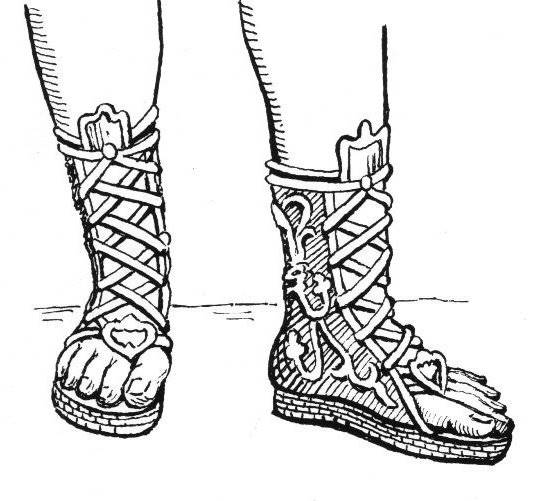History of Buskin Shoes
As the technology for creating more elaborate footwear became more common among ancient European civilization, one particular type of boot managed to infuse itself into the daily lives of many people in 1st millennia BC. These shoes were Bysking boots in knee- or calf-length, made from leather or cloth, with laces that went from the open toes to the end of the shoes.
Made as a natural extension of sandals, first appearance of Buskin shoes is attributed to Ancient Greece where they carried the name of kothurnos (Latin “cothurnos”). These calf high thick-soled booths became integral piece of attire for Athenian tragedy actors, and greatly helped to distinguished themselves from light and small shoes carried by comedians (socks, or “soccus” in Latin). Their initial invention from 1000 BCE region of Aegean soon spread across entire Greece, where soldiers, hunters and athletes quickly adopted them, and modified them to be more durable and easier to wear (athletes preferred fur). Decoration on those shoes varied from scenes of nature to animals and gods, but it was recorded that Spartan soldiers preferred simple red designs that effectively hid the blood.

As centuries went, even depiction of Greek gods showed them with the elaborately designed and decorated buskin shoes, so it was not strange that Roman civilization soon took notice of this Greek invention and imported high end Buskin shoes that became very popular with high class citizens. From there, buskin shoes came in and out of fashion, appearing in many points of time both as high-end footwear of the rich (they were often seen as a part of Byzantine emperors attire, embroiled in gold and natural designs) or as popular and easily maintainable item of the poor (until mid-1960s, workers in rural Norfolk preferred to wear buskins in the time of harvest to prevent rats climbing undetected up their feet.).
Roman Catholic Church also accepted buskin shoes as part of their attire. Until 8th century almost every priest carried them freely at all times, but after that, only high ranking bishops and member of episcopal "regalia". They are used only in ceremonies, made from silk and sometimes interwoven by gold threads. Even Pope sometimes wears them over his red papal shoes.

